Design of a Low-Loss, Low-Cost Rolling Element Bearing System for a 5 kWh/100 kW Flywheel Energy Storage System
Abstract
:1. Introduction
2. Motivation and Current State of the Art
2.1. Bearing Systems in Currently Available FESS
Research in Low-Cost, Low-Loss FESS Bearings
- I
- “Experimental Characterization of Low-Speed Passive Discharge Losses of a Flywheel Energy Storage System” by M. Skinner and P. Mertiny [22].
- II
- “Flywheel Energy Storage System with Spherical Spiral Groove Bearing” by J.-I. Itoh and N. Yamada [23].
- III
- “Flywheel energy storage system with a permanent magnet bearing and a pair of hybrid ceramic ball bearings” by S. Jiang, W. Hongchang and S. Wen [24].
- To assess the torque loss of rolling bearings in FESS, windage losses must also be considered/isolated, which requires thorough evacuation of the tested flywheel system.
- Passive discharge losses in FESS are rarely dealt with in the literature, with the following publications presenting similar methods and results:
- ○
- Skinner and Mertiny’s paper [22], for instance, focuses on windage losses and a curve-fit model for overall losses, whereas the publication at hand goes into greater detail regarding bearing system design.
- ○
- Suzuki et al. [23] investigate and optimize inner bearing geometry to achieve friction loss optimization. In comparison, the publication at hand is based on off-the-shelf bearings and deals with the bearing periphery for optimization purposes. Therefore, advantages regarding cost for small batch size are be taken into account.
- ○
- Jiang et al. [24] conducted a study, which focuses on machine dynamics of a FESS rotor and include measurements of rolling bearing system power losses. A comparison with the results of the work at hand is given in Section 4.1.
2.2. Bearing and Other Losses in FESS
- Self-discharge
- Service life
- Maintenance intervals
- Thermal management
- System cost
2.3. Main Aim of This Work
2.4. Description of the 5-kWh–100-kW FESS
2.5. Operating Parameters and Target Properties of the Projected FESS
3. Functional Requirements in Bearing System Design for FESS
3.1. Machine Dynamics
- the resilient mounting of the bearing shield in the housing
- the spring preload, which does not provide an end stop
- a low angular stiffness of the bearing on the shaft
3.2. Bearing Loads
3.2.1. Radial Bearing Loads
3.2.2. Axial Bearing Loads
- (a)
- The rotor weight
- (b)
- (Intentional) axial bearing preload
- (a)
- Magnetic Rotor Weight Compensation
- (b)
- Axial Bearing Preloading
- Setup A consists of coil springs attached on each bearing shield. This configuration ensures constant, precisely adjustable axial preload. Nevertheless, this configuration is very prone to vibrations and attention must be paid to axial oscillations as a result of potential external axial excitations. These excitations may be caused by overall system machine dynamics or the naturally instable characteristics of an attracting magnetic weight compensation.
- In Setup B a spring presses the opposite bearing shield against an end-stop. This design is very robust and simple, but it must be assured that rotor weight compensation does not exceed 100% and relieve the bearing pressed against the end-stop as this state would lead to issues regarding bearing kinematics as discussed in Section 3.2.3.
3.2.3. Bearing Kinematics
- Minimum Load Limit
- Spin-to-Roll Ratio
- An increase in external axial bearing load
- Decreasing rotational speed
- The use of ceramic rolling elements (hybrid bearings—this effect may be attributed to the higher modulous of elasticity of ceramic (e.g., Si3N4) rolling elements and the lower density compared to steel, resulting in reduced centripetal forces).
3.2.4. Bearing Fatigue Limit
3.2.5. Adjustment of Preload and Weight Compensation
4. Thermal Management and Lubrication
- Bearing thermal conductance
- Bearing torque loss
4.1. Thermal Properties of the Bearing System
4.2. Lubrication
- Maximum permissible temperature of the cage: This part is usually made from polyamide and limited at around 100–120 °C or PEEK for higher temperatures up to 150 °C [37].
- Service life of the lubricant: When operated above the so-called continuous limit temperature), the service life of the lubricant is reduced exponentially [28].
5. Final System Specifications
6. Summary and Conclusions
- The use of rolling element bearings is significantly cheaper than active magnetic bearings.
- -
- AMBs may be advantageous in terms of service life and offer adjustable stiffness and damping, which is beneficial in terms of achieving reliable machine dynamics behavior [48].
- -
- Drawbacks because of low damping in REBs are compensated for by the introduction of an elastomer suspension, which provides external (viscous) damping to the bearing system. Compared to widely used squeeze film dampers [24], elastomer suspension concepts are advantageous in terms of cost.
- -
- Limited service life of REBs can be improved through different measures, such as magnetic weight compensation and supercritical machine dynamics operation strategy. Both aspects are dealt with in Section 3.
- The use of easy to manufacture passive vibration isolation measures (cast elastomer structures using 3-D printed casts) is cheaper than active measures such as squeeze film dampers or piezo actuators.
- The resilient bearing seat allows looser tolerancing (and super-critical rotor operation) resulting in reduced manufacturing cost.
6.1. Conclusions and Future Recommendations
6.2. Torque Loss and Thermal Conductance
6.3. Emergency Mode and Performance Enhancing Coatings
6.4. Reduced Cost and Manufacturing Tolerances
Author Contributions
Funding
Institutional Review Board Statement
Informed Consent Statement
Data Availability Statement
Acknowledgments
Conflicts of Interest
References
- Haidl, P.; Buchroithner, A.; Schweighofer, B.; Bader, M.; Wegleiter, H. Lifetime analysis of energy storage systems for sustainable transportation. Sustainability 2019, 11, 6731. [Google Scholar] [CrossRef] [Green Version]
- Amiryar, M.E.; Pullen, K.R. A Review of Flywheel Energy Storage System Technologies and Their Applications. Appl. Sci. 2017, 7, 286. [Google Scholar] [CrossRef] [Green Version]
- Brits, Barry. Beacon Power Flywheel Energy Storage Systems. 2021. Available online: https://d3pcsg2wjq9izr.cloudfront.net/files/66604/download/787668/beacon_power_brochure_081414.pdf (accessed on 25 August 2021).
- Buchroithner, A. Schwungradspeicher in der Fahrzeugtechnik; Springer Vieweg: Berlin/Heidelberg, Germany, 2019. [Google Scholar]
- Buchroithner, A.; Preßmair, R.; Haidl, P.; Wegleiter, H.; Thormann, B.; Kienberger, T.; Auer, P.; Domitner, J. Grid Load Mitigation in EV Fast Charging Stations Through Integration of a High-Performance Flywheel Energy Storage System with CFRP Rotor. In Proceedings of the IEEE Green Energy and Smart Systems Conference (IGESSC 2021), Long Beach, CA, USA, 1–2 November 2021. [Google Scholar]
- Buchroithner, A.; Bader, M. History and development trends of flywheel-powered vehicles as part of a systematic concept analysis. In Proceedings of the European Electric Vehicle Congress (EEVC), Brussels, Belgium, 26–28 October 2011. [Google Scholar]
- Buchroithner, A.; Brandstatter, A.; Recheis, M. Mobile Flywheel Energy Storage Systems: Determining Rolling Element Bearing Loads to Expand Possibilities. IEEE Veh. Technol. Mag. 2017, 12, 83–94. [Google Scholar] [CrossRef]
- Buchroithner, A.; Haan, A.; Preßmair, R.; Bader, M.; Schweighofer, B.; Wegleiter, H.; Edtmayer, H. Decentralized Low-Cost Flywheel Energy Storage for Photovoltaic Systems. In Proceedings of the International Conference on Sustainable Energy Engineering and Application (ICSEEA 2016), Jakarta, Indonesia, 3–5 October 2016. [Google Scholar]
- Buchroithner, A. Effizienterer Einsatz von Schwungradspeichern in Fahrzeugen Durch Interdisziplinäre und Multidimensionale Optimierung ihres Sub-und Supersystems; Graz University of Technology: Graz, Austria, 2015. [Google Scholar]
- Hewitt, J. The Velkess Flywheel: A More Flexible Energy Storage Technology. 2013. Available online: https://phys.org/news/2013-04-velkess-flywheel-flexible-energy-storage.html (accessed on 6 December 2020).
- EMEA Active Power Solutions Ltd. CleanSource® 750HD UPS; Lauriston Business Park: Evesham, UK, 2015. [Google Scholar]
- Biggs, T. A Flywheel like No Other; Temporal Power Ltd.: Mississauga, ON, Canada, 2016. [Google Scholar]
- Arseneaux, J. 20 MW Flywheel Energy Storage Plant; Beacon Power LLC: Hazle Township, PA, USA, 2013. [Google Scholar]
- Kinetic Traction Systems, Inc. Flywheel Energy Storage UPS & Power Quality Applications (Produktinformation); Kinetic Traction Systems, Inc.: Chatsworth, CA, USA, 2015. [Google Scholar]
- PowerThru Inc. Cleann Flywheel Energy Storage—The Battery-Free Solution for Your UPS System; PowerThru Inc.: Livonia, MI, USA, 2014. [Google Scholar]
- Calnetix. VYCON® Direct Connect (VDC®)—The Optimal UPS Energy Storage Solution for Mission-Critical Power Protection; Calnetix Technologiesl: Cerritos, CA, USA, 2015. [Google Scholar]
- Täubner, F. Schwungradspeicher in Vision und Realität; Konstruktionsbüro Frank Täubner: Derenburg, Germany, 2014. [Google Scholar]
- Strasik, M.; Johnson, P.E.; Day, A.C.; Mittleider, J.; Higgins, M.D.; Edwards, J.; Schindler, J.R.; McCrary, K.E.; McIver, C.R.; Carlson, D.; et al. Design, Fabrication, and Test of a 5-kWh/100-kW Flywheel Energy Storage Utilizing a High-Temperature Superconducting Bearing. IEEE Trans. Appl. Supercond. 2007, 17, 2133–2137. [Google Scholar] [CrossRef] [Green Version]
- May, H.; Hoffmann, J.; Hoffmann, P.; Hinrichsen, F.; Koch, I. Flywheel Mass Energy Storage with HTS Bearing—Development Status. In Proceedings of the WCRE/Eurosolar International Conference on Renewable Energy Storage, Gelsenkirchen, Germany, 30–31 October 2006. [Google Scholar]
- Sanders, S.; Senesky, M.; He, M.; Chiao, E. Low-Cost Flywheel Energy Storage Demonstration. In Energy Research and Development Division Final Project Report; California Energy Commission: Sacramento, CA, USA, 2015. [Google Scholar]
- Storenetic—The Energy Storage Company. Powerful Storage System for Grid Services; Storenetic GmbH: Jülich, Germany, 2018. [Google Scholar]
- Skinner, M.; Mertiny, P. Experimental Characterization of Low-Speed Passive Discharge Losses of a Flywheel Energy Storage System. Appl. Mech. 2021, 2, 1–15. [Google Scholar] [CrossRef]
- Suzuki, T.; Masuda, T.; Itoh, J.; Yamada, N. Reduction of Mechanical Loss of Flywheel Energy Storage Systems with Spherical Spiral Groove Bearing. In Proceedings of the 2017 IEEE 12th International Conference on Power Electronics and Drive Systems (PEDS), Honolulu, HI, USA, 12–15 December 2017. [Google Scholar]
- Jiang, S.; Wang, H.; Wen, S. Flywheel energy storage system with a permanent magnet bearing and a pair of hybrid ceramic ball bearings. J. Mech. Sci. Technol. 2014, 28, 5043–5053. [Google Scholar] [CrossRef]
- Buchroithner, A.; Andrasec, I.; Bader, M. Optimal system design and ideal application of flywheel energy storage systems for vehicles. In Proceedings of the IEEE International Energy Conference and Exhibition (Energycon), Florence, Italy, 9–12 September 2012. [Google Scholar]
- Thormann, B.; Kienberger, T. Evaluation of Grid Capacities for Integrating Future E-Mobility and Heat Pumps into Low-Voltage Grids. Energies 2020, 13, 5083. [Google Scholar] [CrossRef]
- Carlino, G.A. Economies of Scale in Manufacturing Location—Theory and Measure; Springer: Boston, MA, USA, 1978; ISBN 978-1-4613-4069-0. [Google Scholar]
- Schaeffler Technologies Ag & Co. KG. Schmierung von Wälzlagern; Schaeffler Technologies Ag & Co. KG: Herzogenaurach, Germany, 2013. [Google Scholar]
- Birkhofer, H.; Kümmerle, T. Feststoffgeschmierte Wälzlager—Einsatz, Grundlagen und Auslegung; Springer-Viehweg: Berlin/Heidelberg, Germany, 2012. [Google Scholar]
- Recheis, M.; Buchroithner, A.; Andrasec, I.; Gallien, T.; Schweighofer, B.; Bader, M.; Wegleiter, H. Improving kinetic energy storage for vehicles through the combination of rolling element and active magnetic bearings. In Proceedings of the IECON 2013-39th Annual Conference of the IEEE Industrial Electronics Society, Vienna, Austria, 10–13 November 2013. [Google Scholar]
- Buchroithner, A.; Voglhuber, C. Enabling Flywheel Energy Storage for Renewable Energies—Testing of a low-cost, low-friction bearing configuration. In Proceedings of the 12th VDI-Fachtagung Gleit-und Wälzlagerungen, Schweinfurt, Germany, 27–28 June 2017. [Google Scholar]
- Gasch, R.; Nordmann, R.; Pfützner, H. Rotordynamik 2. Auflage; Springer: Berlin/Heidelberg, Germany, 2006. [Google Scholar]
- Haidl, P.; Zisser, M.; Buchroithner, A.; Schweighofer, B.; Wegleiter, H.; Bader, M. Improved Test Rig Design for Vibration Control of a Rotor Bearing System. In Proceedings of the 23rd International Congress on Sound and Vibration, Athens, Greece, 10–14 July 2016. [Google Scholar]
- SKF. Hauptkatalog; SKF: Gothenburg, Sweden, 2008. [Google Scholar]
- Schäffler Technologies AG & Co. KG. Wälzlagerpraxis: Handbuch zur Gestaltung und Berechnung von Wälzlagerungen; Vereinigte Fachverlage GmbH: Mainz, Germany, 2015. [Google Scholar]
- Haidl, P. Systemische Auslegung und Optimierung der Wälzlagerung Stationärer, Kinetischer Energiespeicher; Graz University of Tehnology: Graz, Austria, 2021. [Google Scholar]
- Schaeffler Technologies AG & Co. KG. Hochgenauigkeitslager; Schaeffler Technologies AG & Co. KG: Herzogenaurach, Germany, 2018. [Google Scholar]
- GMN—Paul Müller Industrie GmbH & Co. KG. GMN—Hochpräzisionskugellager. Available online: www.gmn.de (accessed on 3 September 2020).
- Jones, A. Ball motion and sliding friction in ball bearings. ASME Trans. J. Basic Eng. 1959, 81, 1–12. [Google Scholar] [CrossRef]
- Harris, T.A.; Kotzalas, M.N. Advanced Concepts of Bearing Technology, 5th ed.; CRC Press: Boca Raton, FL, USA, 2007. [Google Scholar]
- Buchroithner, A.; Haidl, P.; Simonyi, M.; Murauer, T.; Wegleiter, H. Design, Operation and Results of a Low-Cost Test Rig for Investigation of Thermal Properties of Rolling Element Bearings in Vacuum. In Proceedings of the ESMATS 2019—European Space Mechanisms and Tribology Symposium, Munich, Germany, 18–20 September 2019. [Google Scholar]
- Takeuchi, Y.R.; Dickey, J.T.; Demsky, S.M.; Lue, K.K.; Kirsch, J.J.; Frantz, P.P. A Methodology for Measuring Thermal Properties of Bearings in Motion [Hrsg.] ASME. In Proceedings of the 15th Annual Thermal and Fluids Analysis Workshop, TFAWS-04, Pasadena, CA, USA, 30 August–3 September 2004. [Google Scholar]
- Buchroithner, A.; Haidl, P.; Birgel, C.; Zarl, T.; Wegleiter, H. Design and Experimental Evaluation of a Low-Cost Test Rig for Flywheel Energy Storage Burst Containment Investigation. Appl. Sci. 2018, 8, 2622. [Google Scholar] [CrossRef] [Green Version]
- NyeLubricants. Datasheet NYETORR 6200. Available online: https://www.nyelubricants.com/productmgr/get.php?id=BmEDalY2CjEKPA%3D%3D (accessed on 23 October 2021).
- Carre, D.J.; Kalogeras, C.G.; Didziulis, S.V.; Fleischauer, P.D.; Bauer, R. Recent Experience with Synthetic Hydrocarbon Lubricants for Spacecraft Applications; Aerospace Report No. TR-95(5935)-3; Aerospace Corporation: El Segundo, CA, USA, 20 June 1995. [Google Scholar]
- NyeLubricants. Datasheet UNIFLOR 8771. Available online: https://www.nyelubricants.com/datasheet/TDS_SHORT_English_UNIFLOR+8771.pdf (accessed on 23 October 2021).
- REIFF Technische Produkte GmbH. Schmierstoffe. Available online: https://shop.reiff-tp.de/shop/de/detail/waelzlager-und-lineartechnik/schmierstoffe/waelzlagerfett-lglt-202-skf.html (accessed on 30 August 2021).
- Olabi, A.G.; Wilberforce, T.; Abdelkareem, M.A.; Ramadan, M. Critical Review of Flywheel Energy Storage System. Energies 2021, 14, 2159. [Google Scholar] [CrossRef]
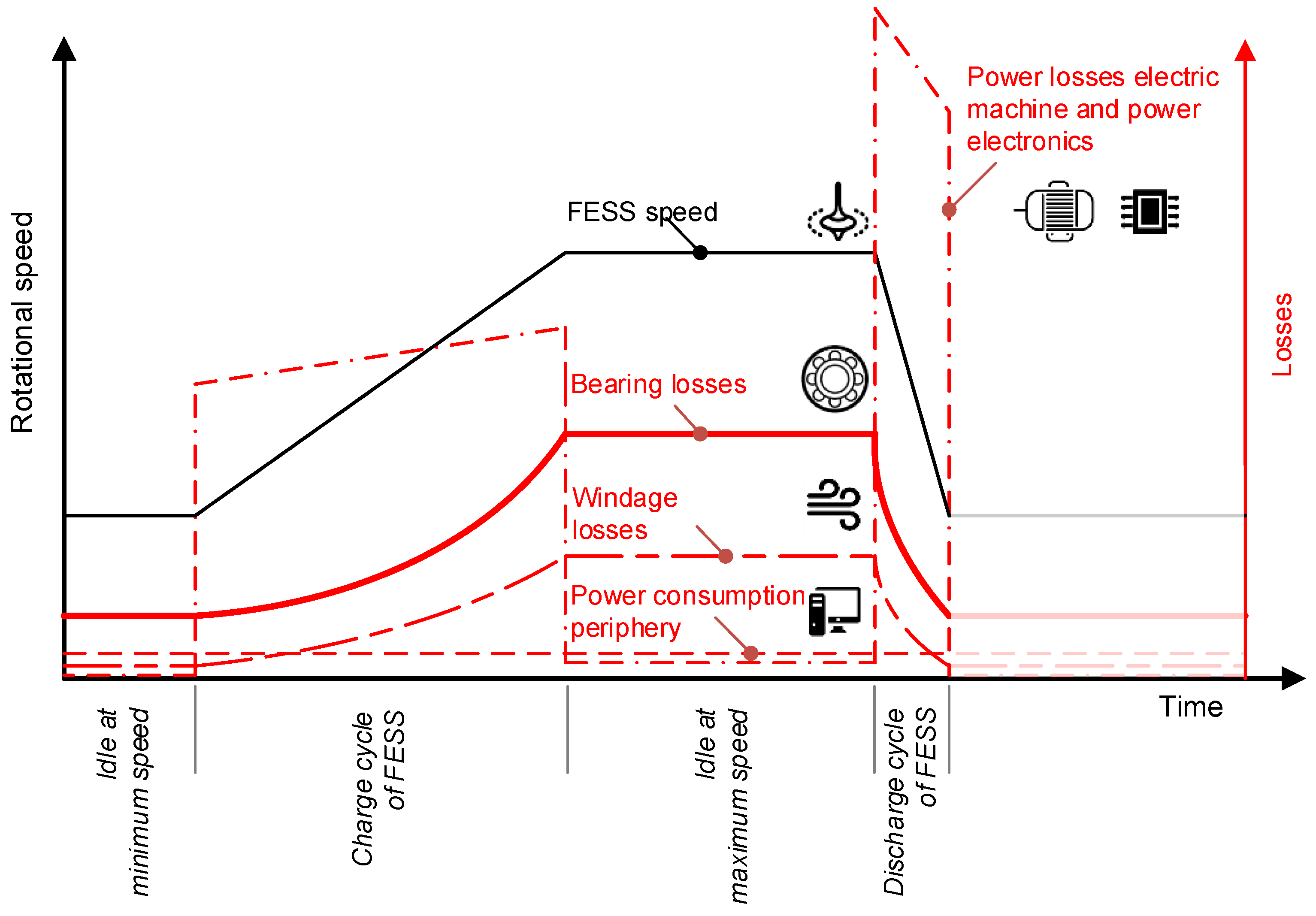
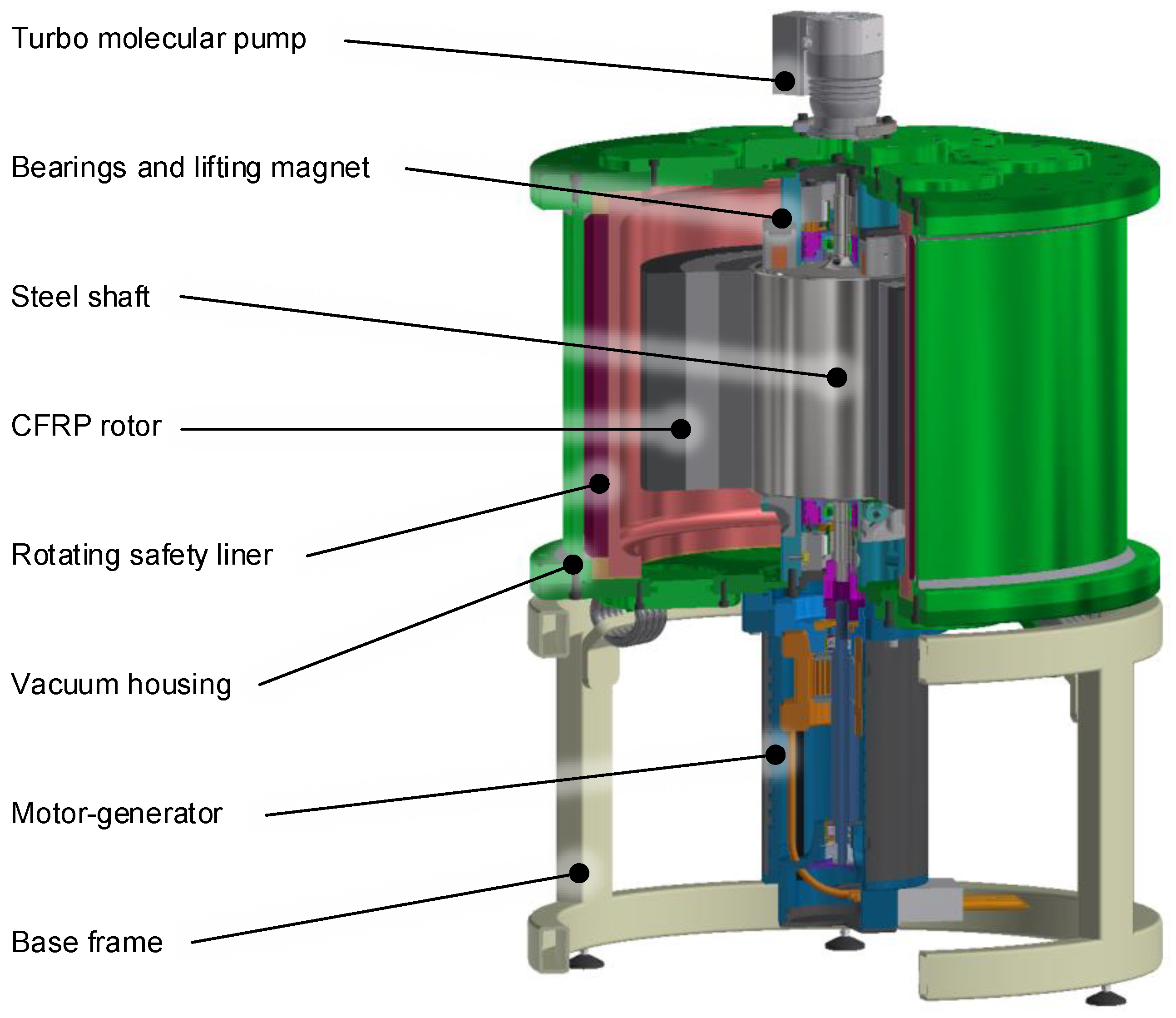
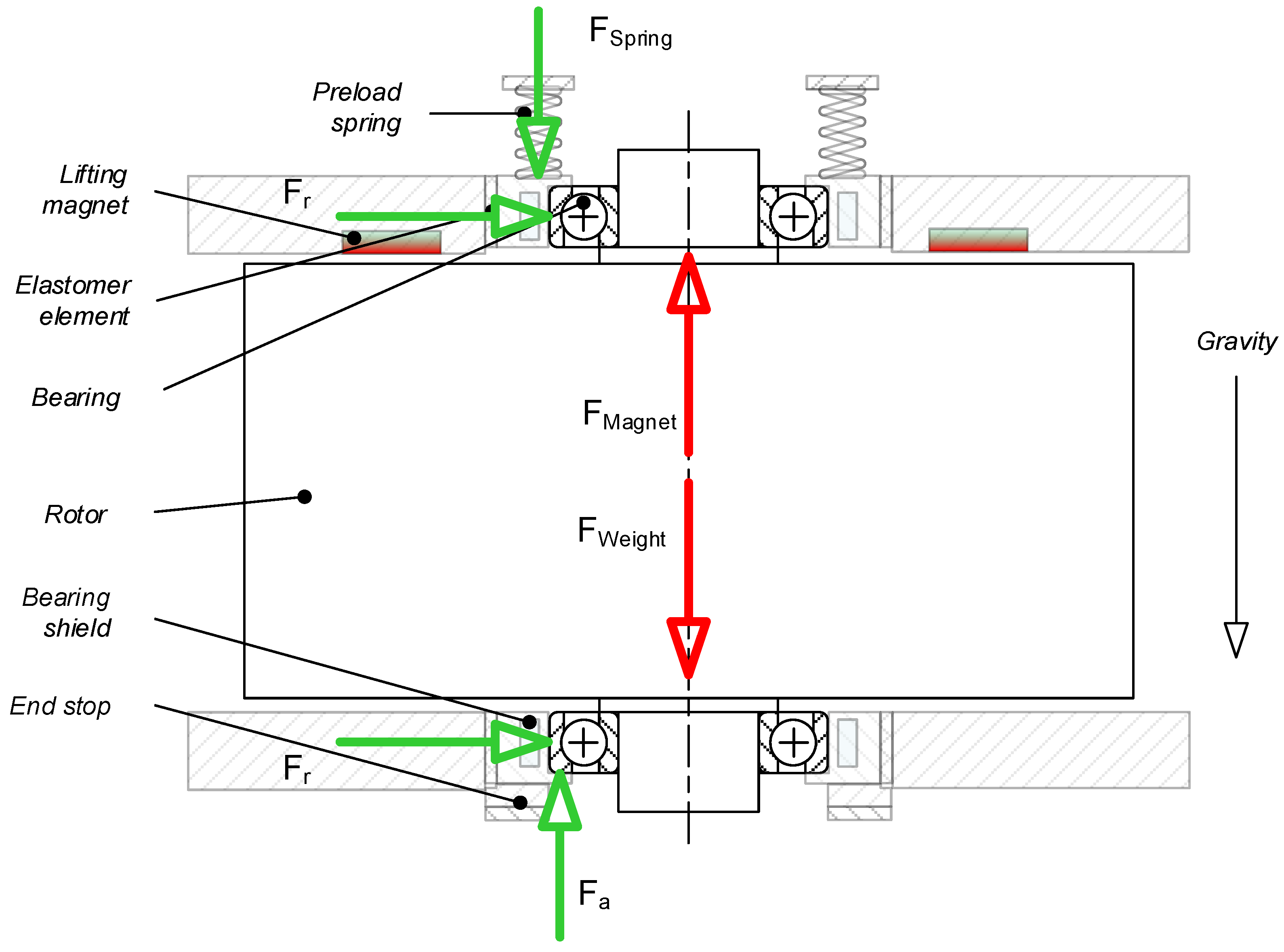
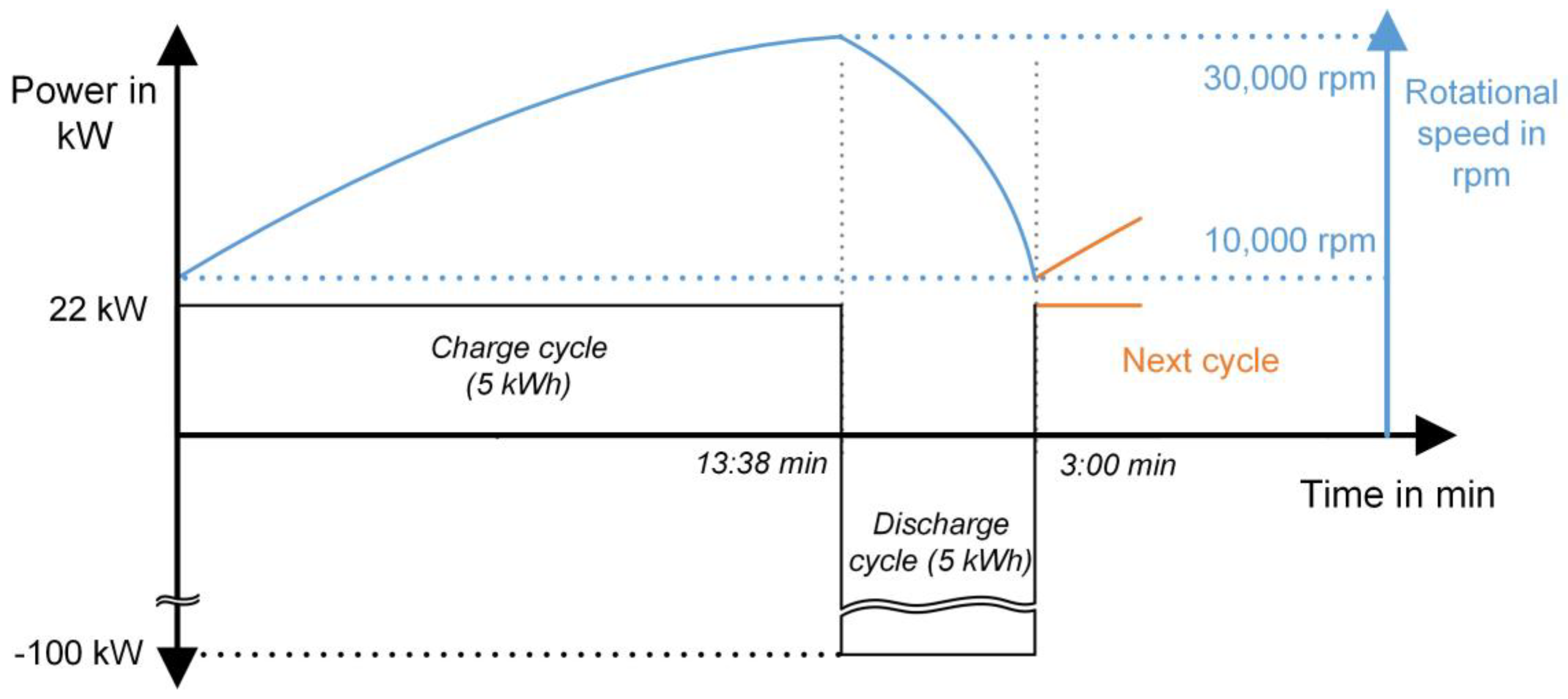

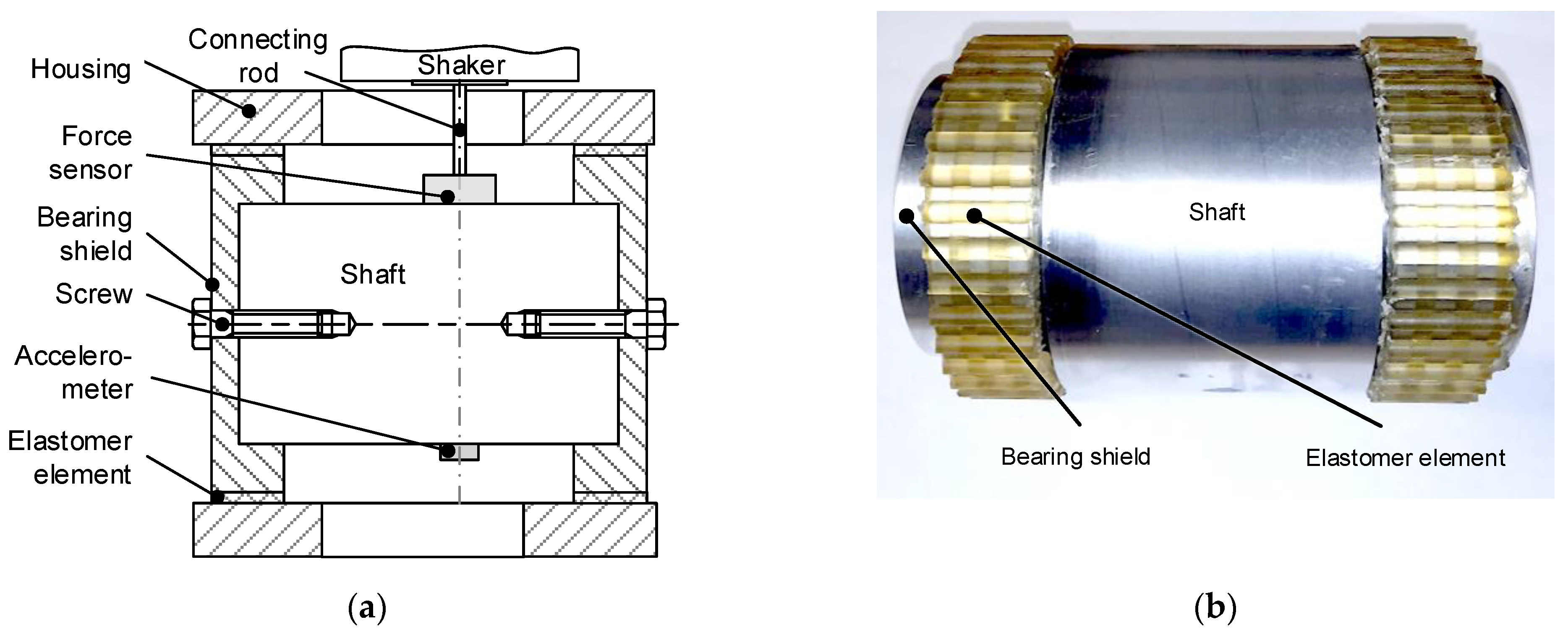
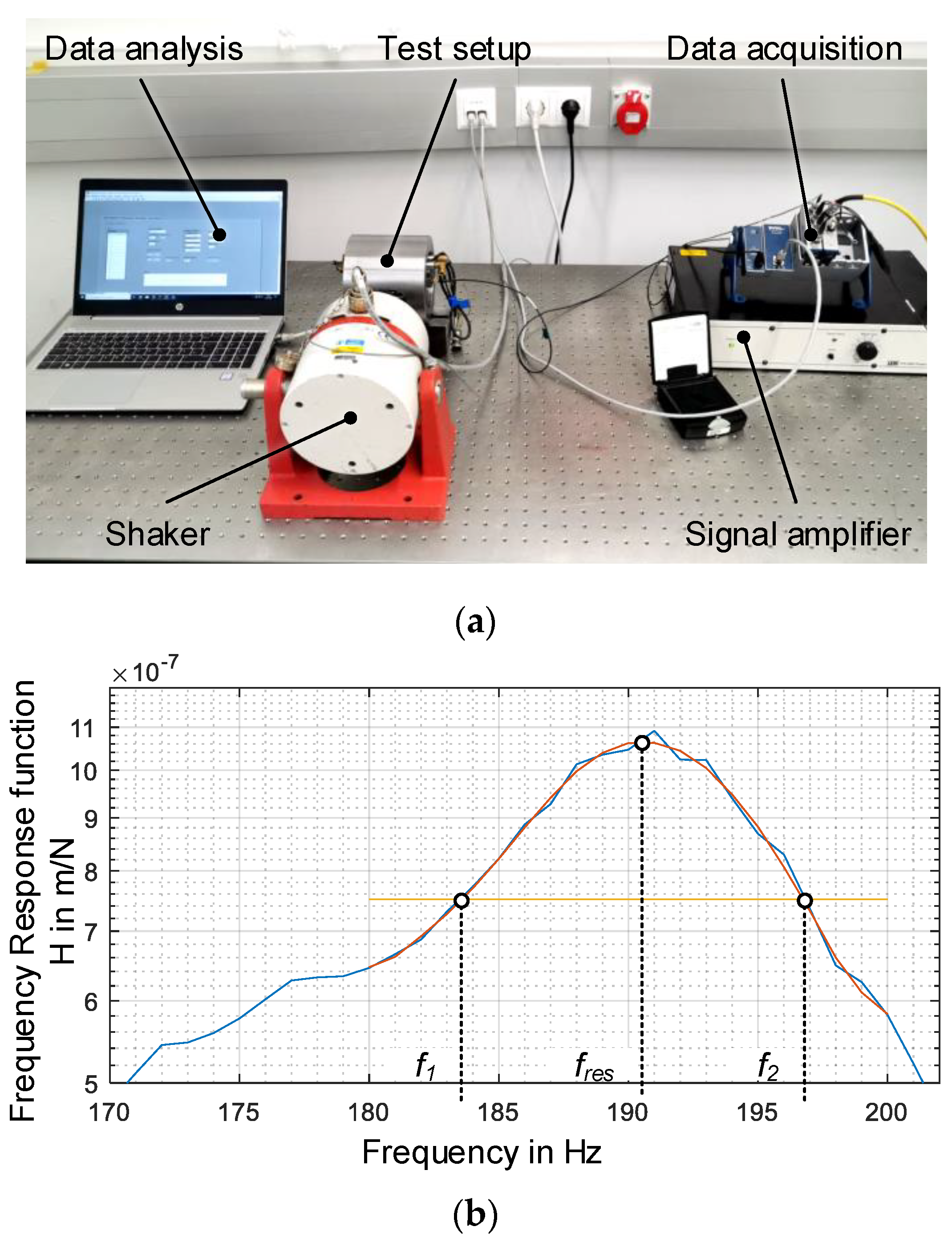

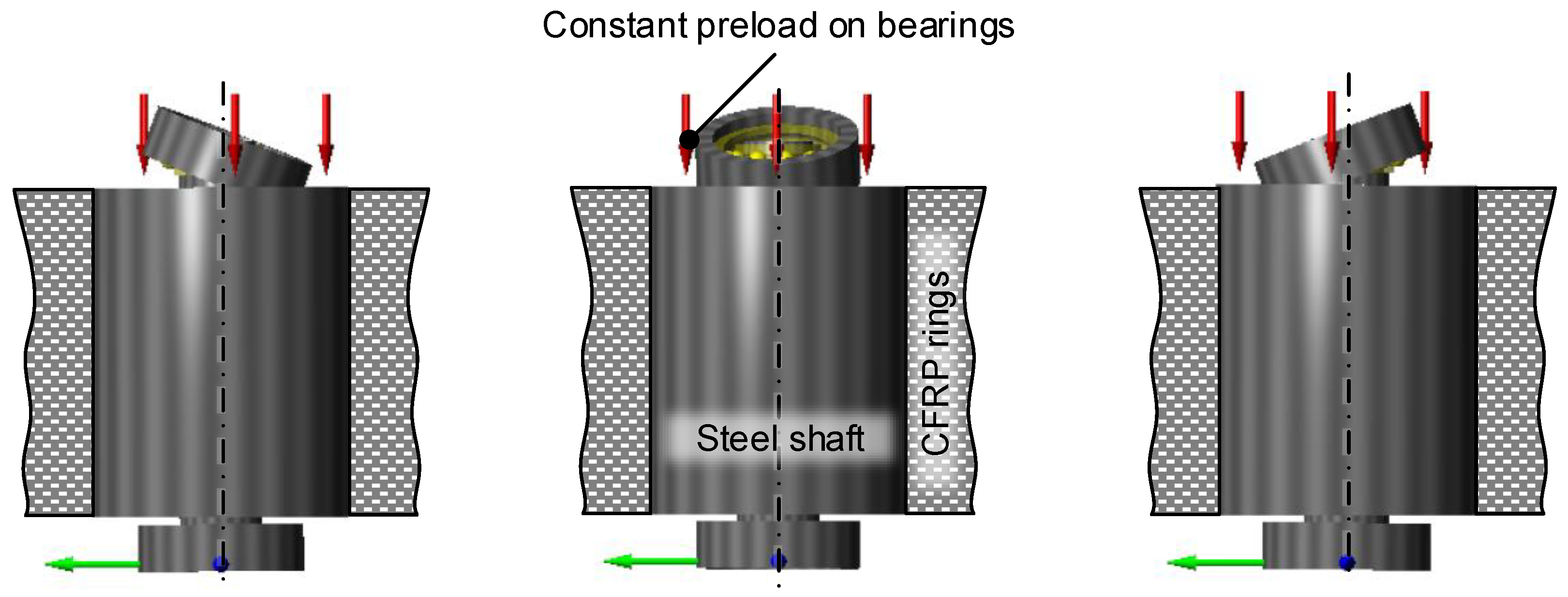

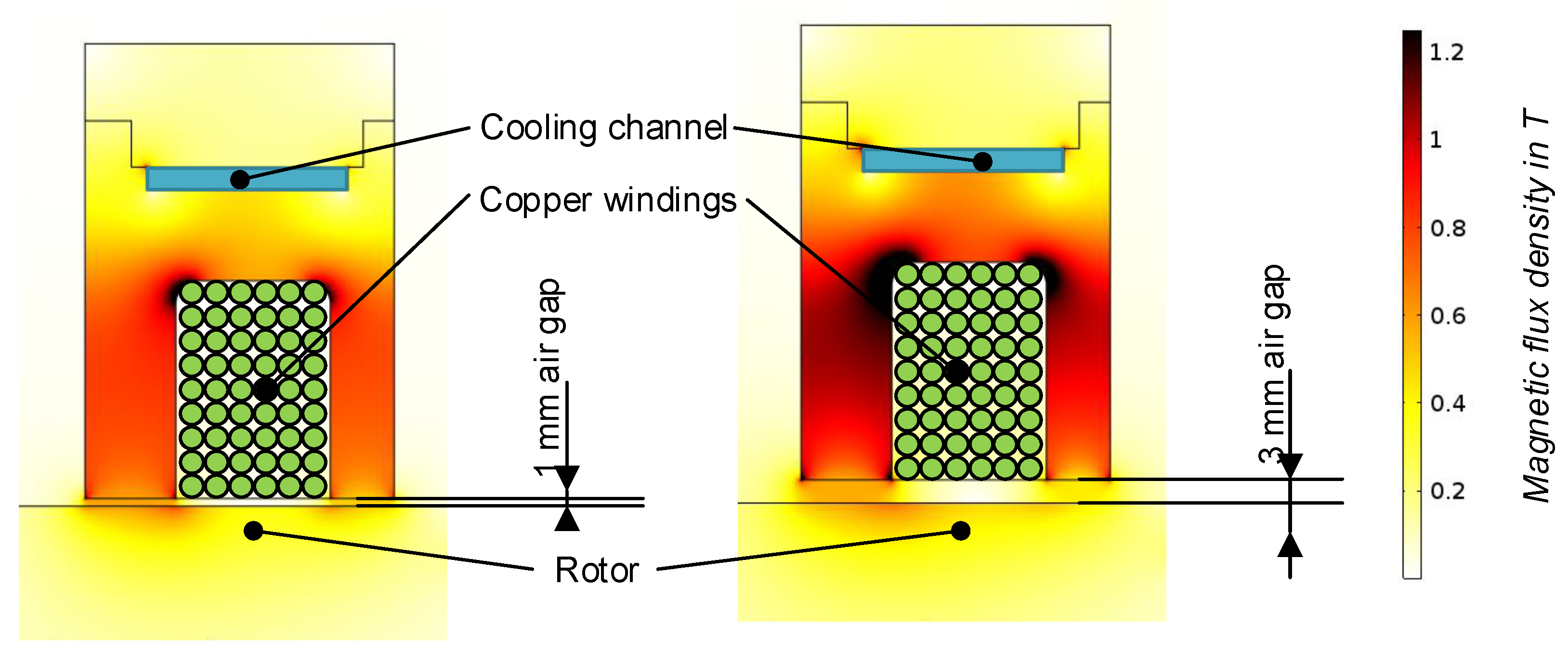
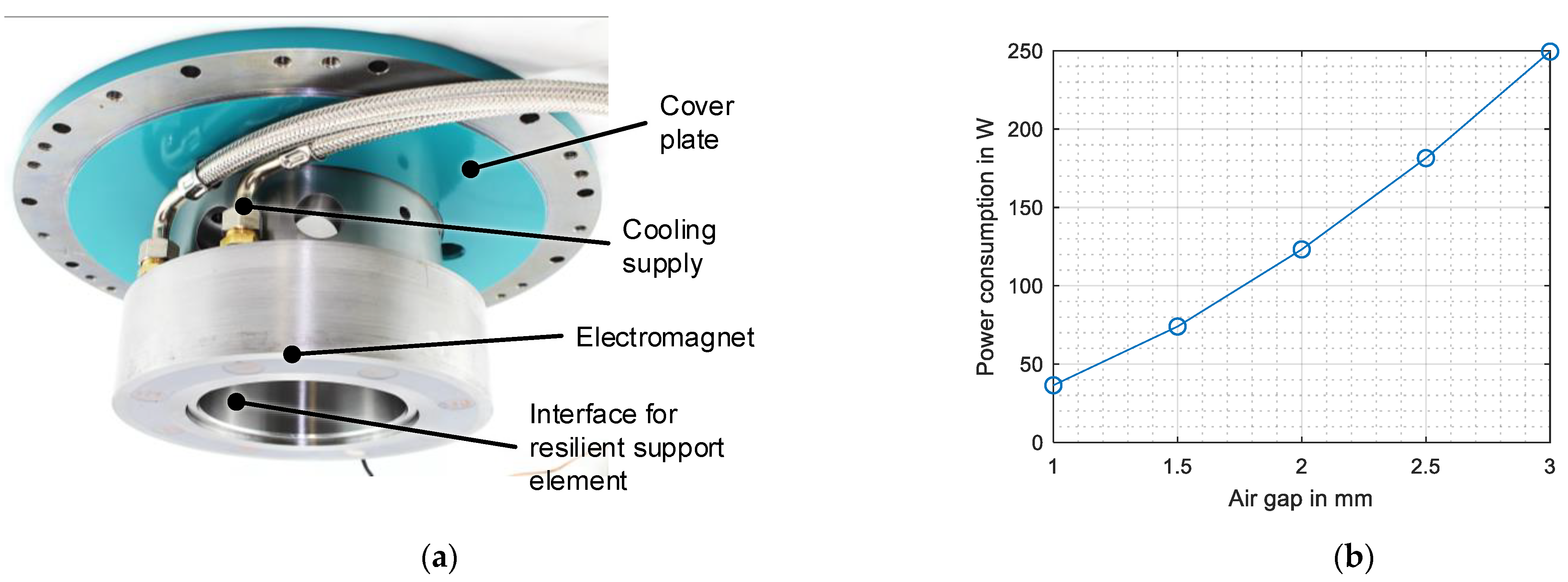
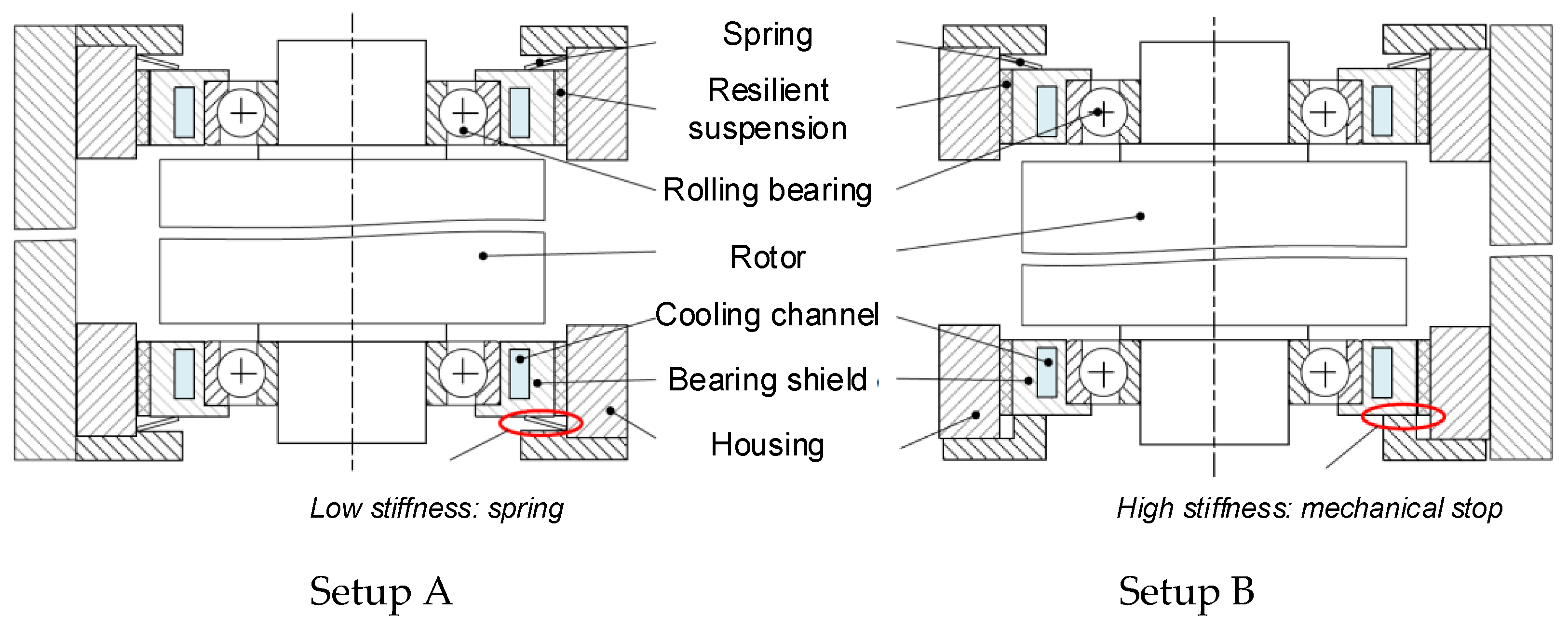
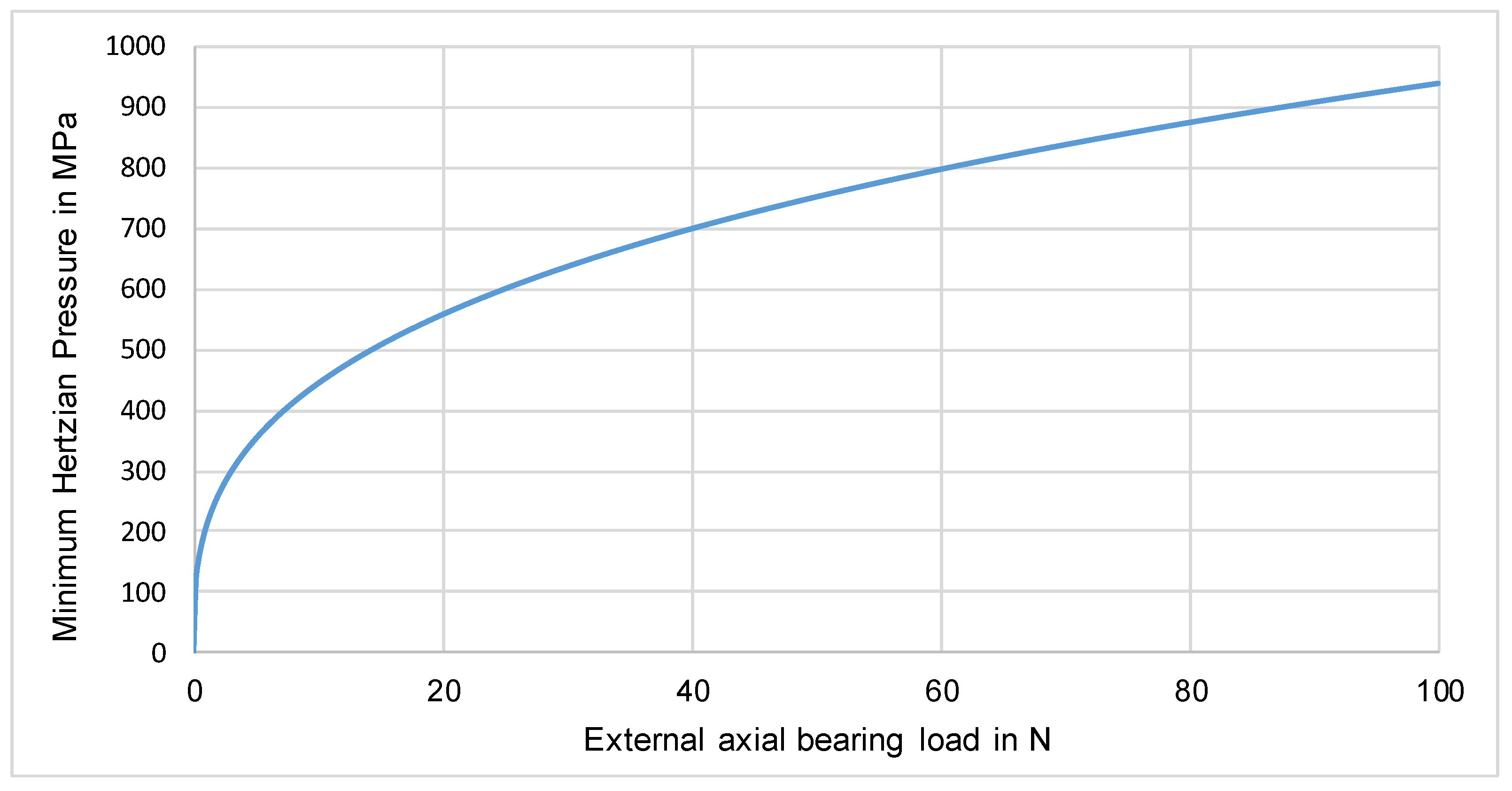
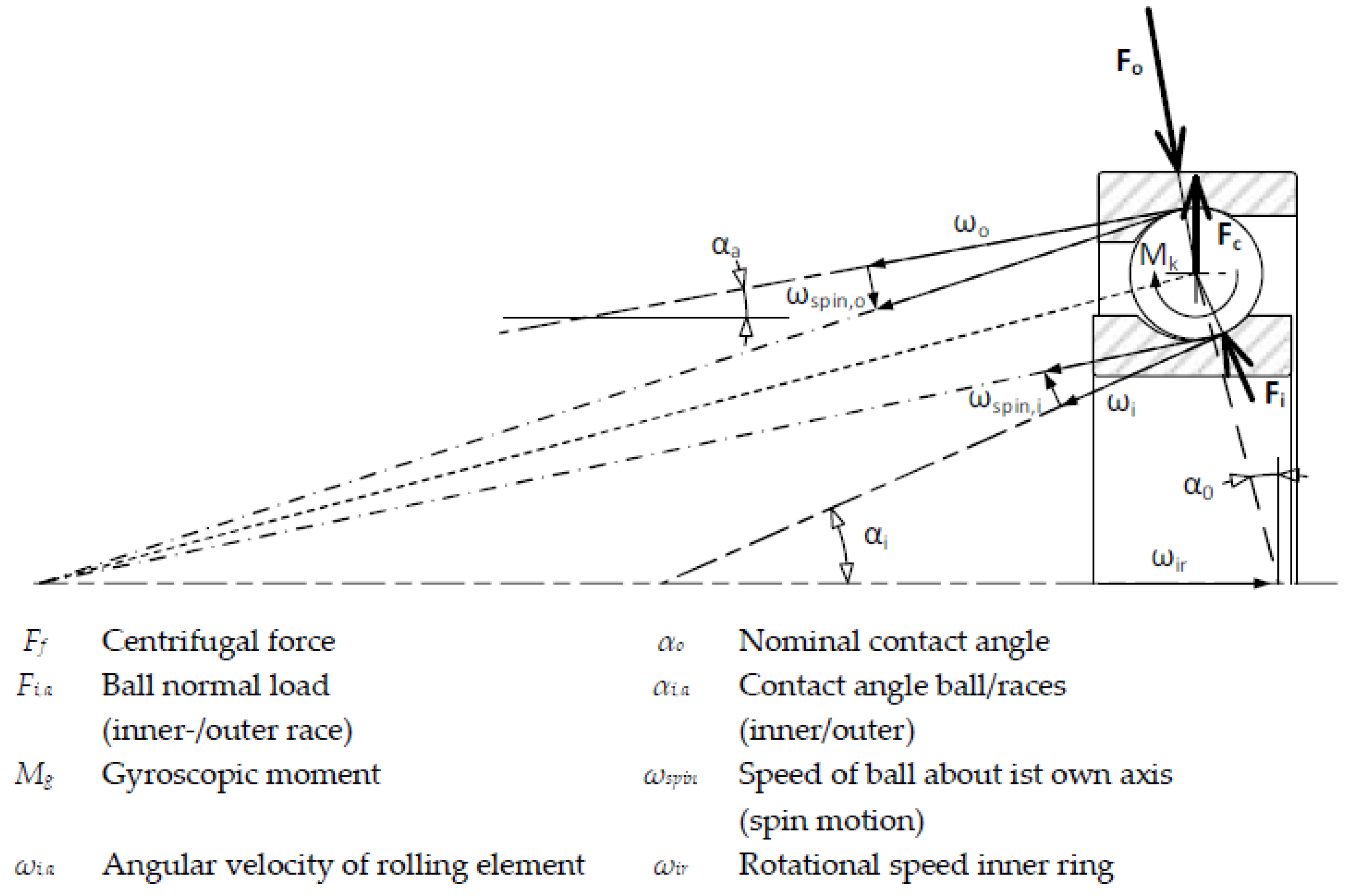
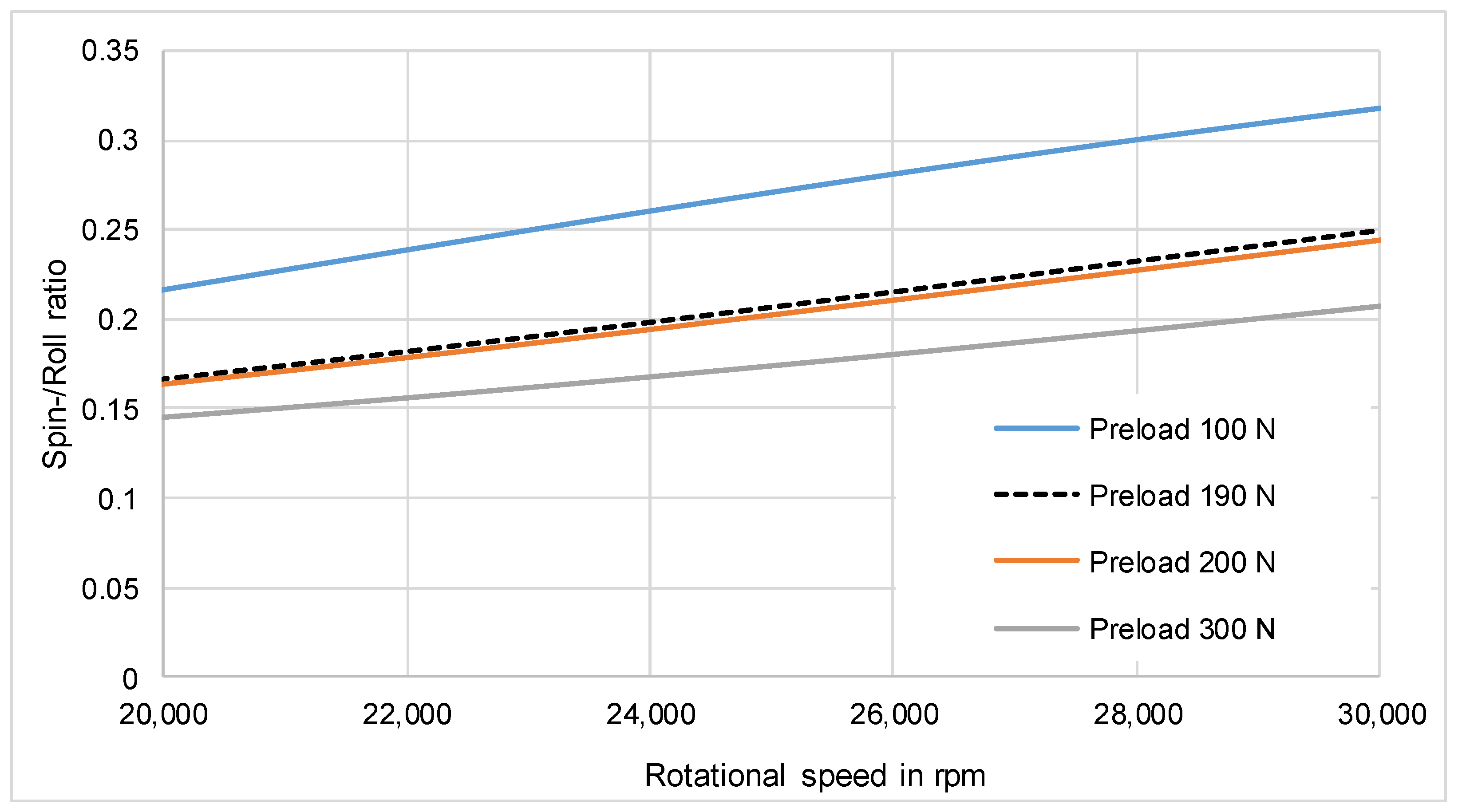
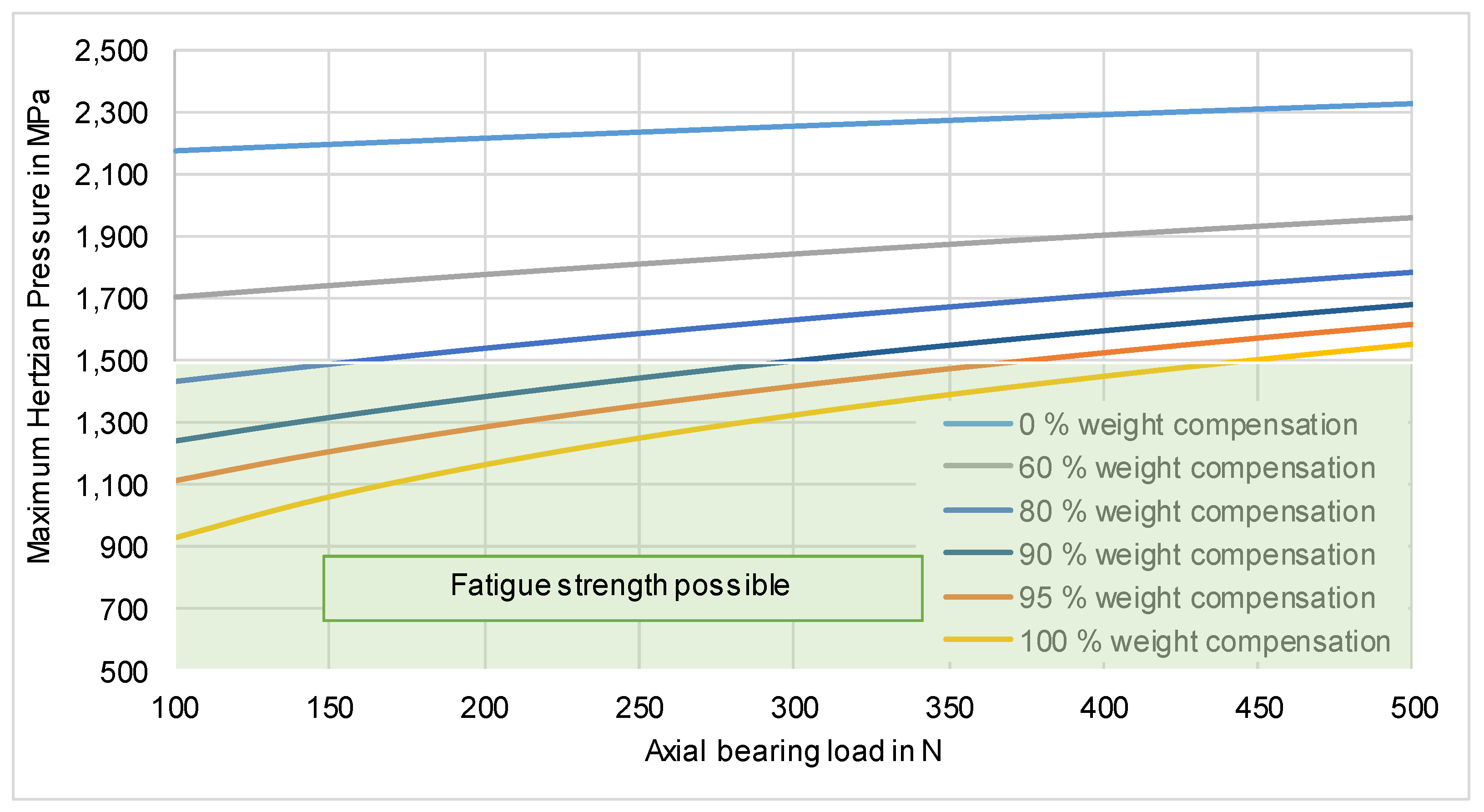
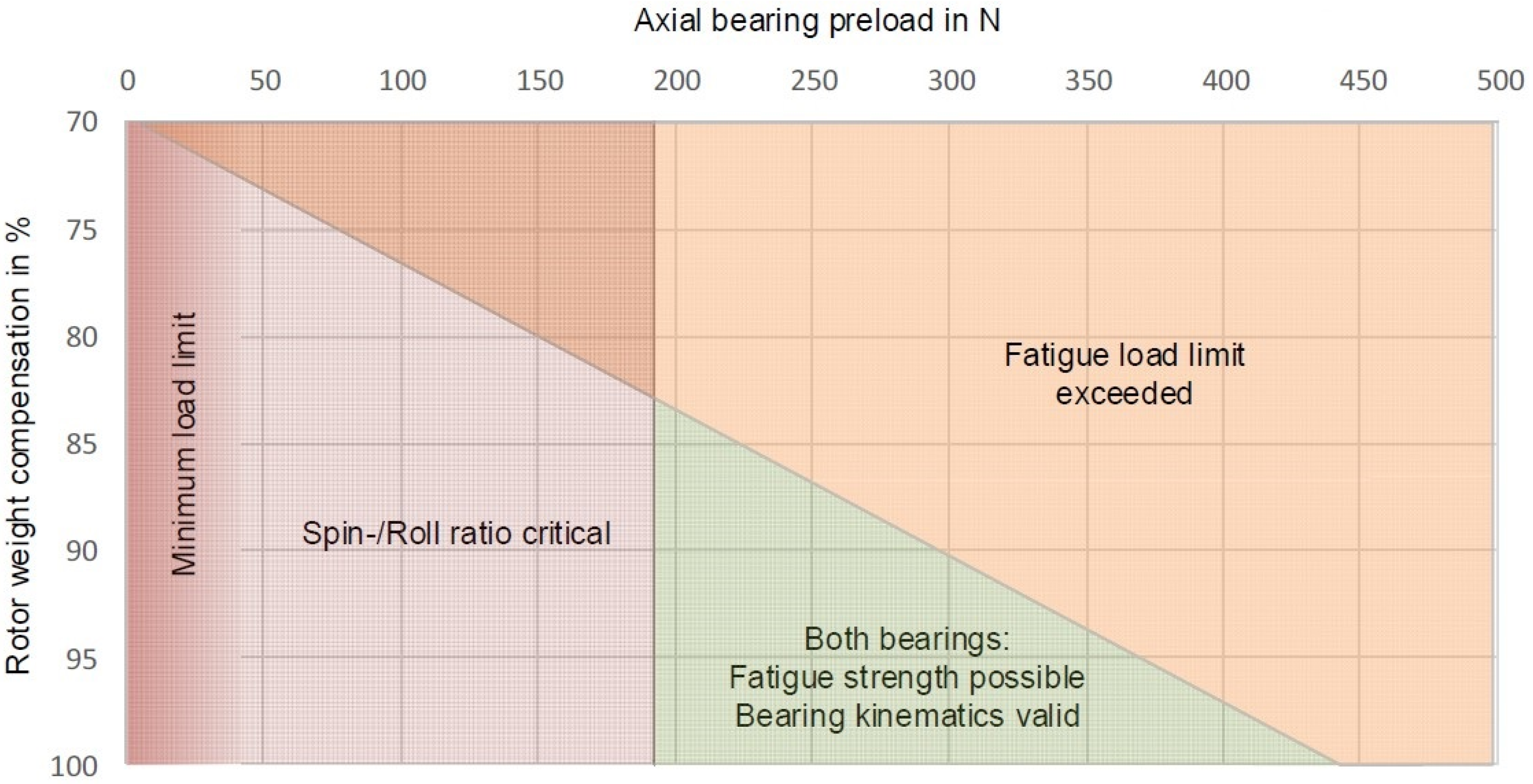
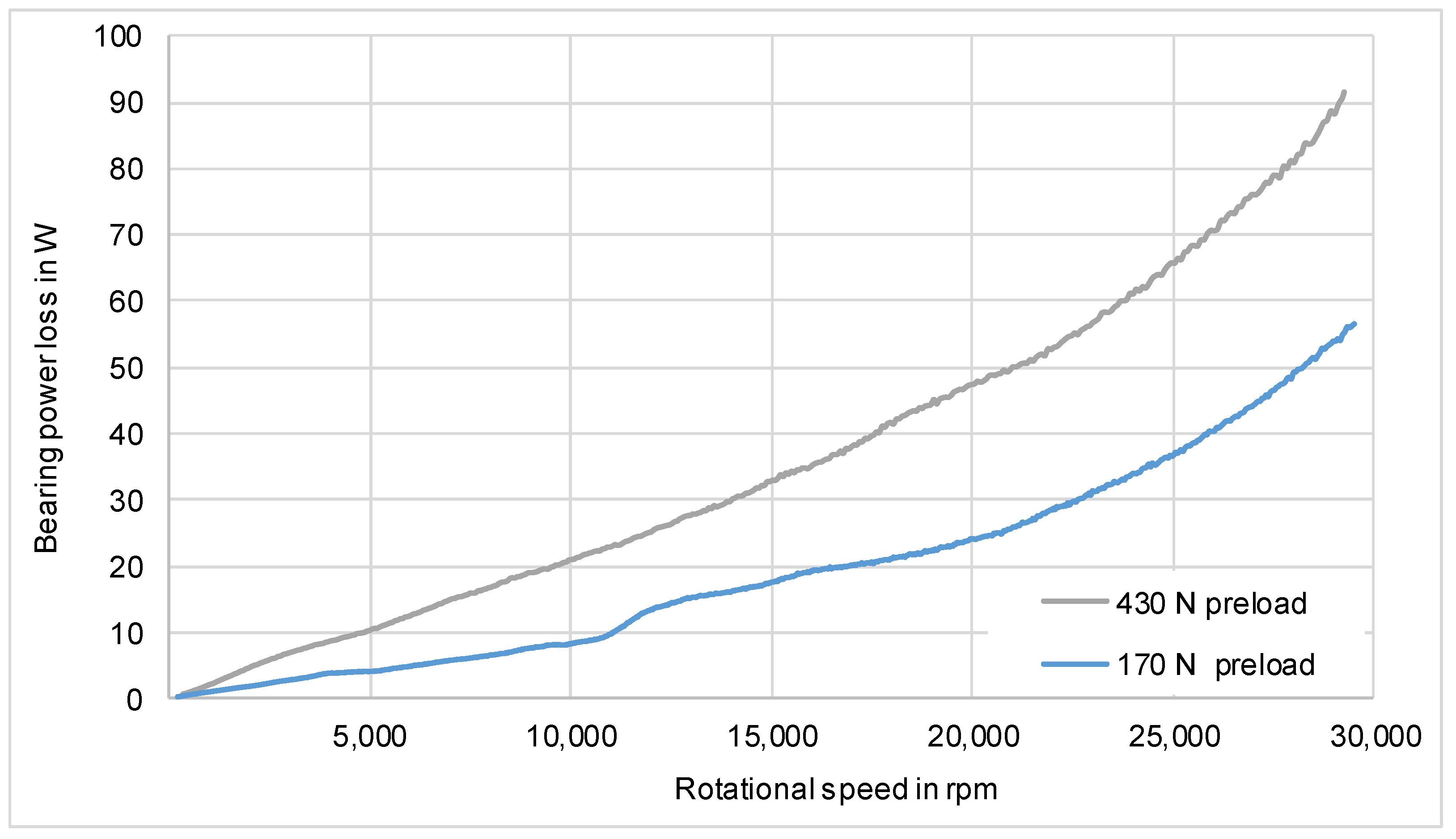

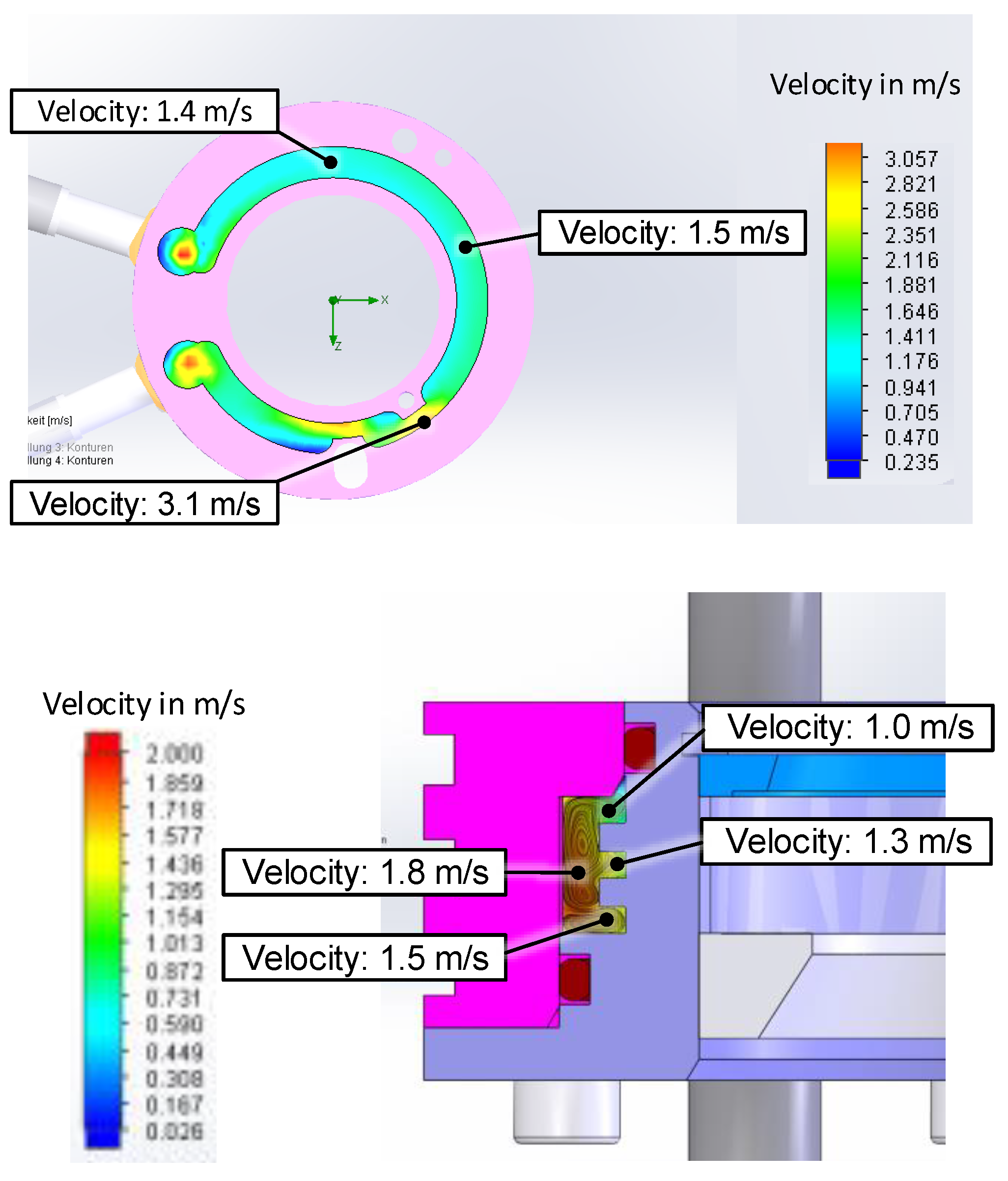
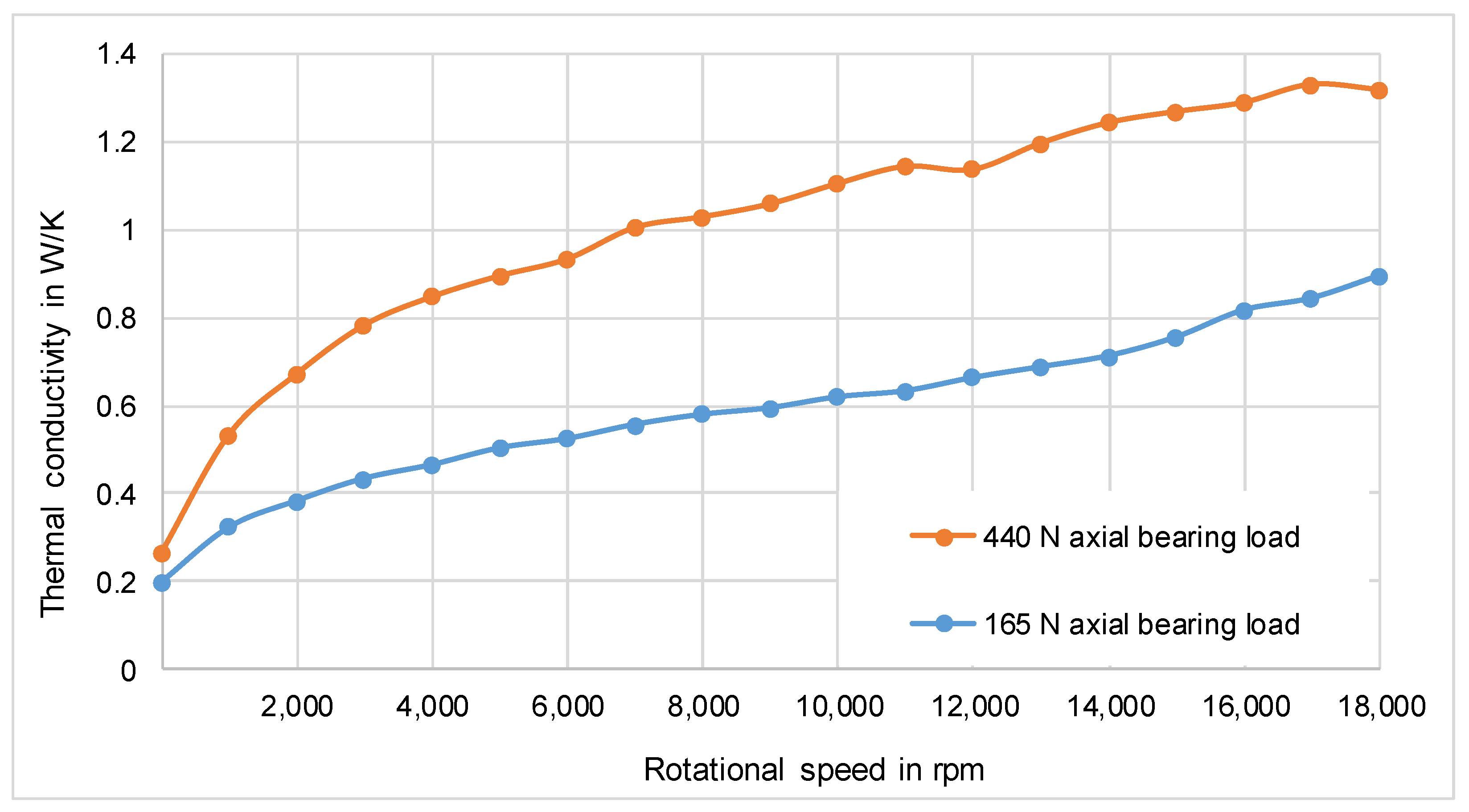

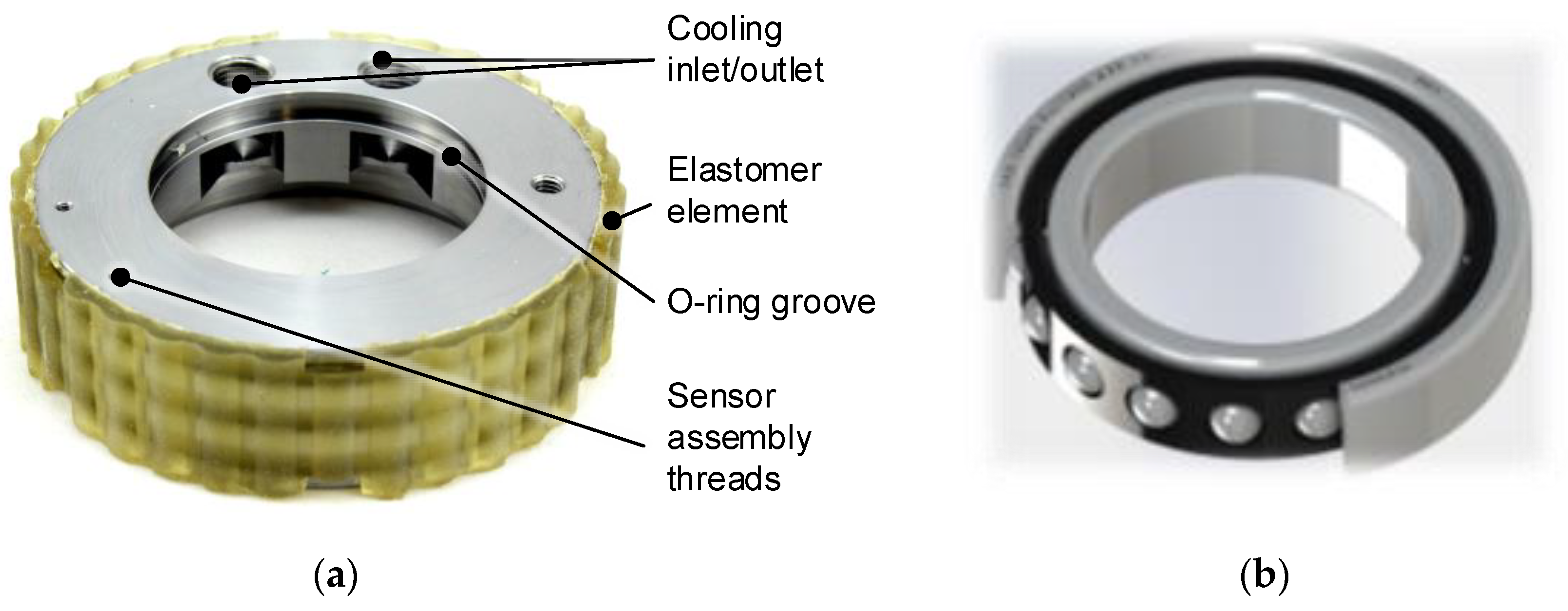

| Company | Country | Year | Type | Energy Content | Power Rating | Speed | Life Span | Bearing | Ref. |
|---|---|---|---|---|---|---|---|---|---|
| kWh | kW | rpm | Years | ||||||
| Siemens | GER | 2014 | prototype | 0.5 | 120 | 10,000 | n.a. | AMB | [9] |
| Velkess | USA | 2011 | prototype | 5–15 | 9 | 9000 | 10 years | REB | [10] |
| Active Power (750HD UPS) | USA | 2015 | series | 2.9 | 675 | 7700 | 20 years | REB | [11] |
| Temporal Power | CAN | 2016 | series | 50 | 1000 | 12,000 | 20 years | REB | [12] |
| Beacon Power | USA | 2008 | series | 25 | 100 | 16,000 | n.a. | AMB | [13] |
| Quantum Power | USA | 2015 | prototype | 360 | 150 | 6000 | 20 years | REB | [9] |
| Kinetic Traction Systems | USA | 2015 | series | 1.5 | 333 | 36,000 | 10 Mio cycles | AMB | [14] |
| PowerTHRU | USA | 2014 | series | 0.53 | 225 | 52,000 | 20 years’ service interval | AMB | [15] |
| Calnetix Vycon (VDC-XXE) | USA | 2015 | series | 1.67 | 300 | 36,750 | 20 years | AMB | [16] |
| Calnetix Vycon (VDC-XXT) | USA | 2015 | series | 1.74 | 450 | 36,750 | 20 years | AMB | [16] |
| Rosseta (T4) | GER | 2011 | prototype | 1.5 | 250 | 50,000 | 20 years | REB | [17] |
| Boeing Phantom | USA | 2007 | prototype | 5 | 100 | 15,000 | >25 years | AMB | [18] |
| Dynastore | GER | 2006 | prototype | 11 | 2000 | 10,000 | n.a. | AMB | [19] |
| Amber Kinetics (GEN-2) | USA | 2015 | series | 25 | 6.25 | 8500 | 30 years | REB | [20] |
| Storenetic (EnWheel 22/60) | GER | 2018 | series | 3.6 | 22/80 | 45,000 | n.a. | AMB | [21] |
| Resonance Frequency | Damping Ratio | Stiffness |
|---|---|---|
| 190.5 Hz | 0.035 | 4.1 N/µm |
| Electromagnet | Permanent Magnet |
|---|---|
| Requires electric power during operation | No power required during operation |
| Increased geometric complexity due to required cooling channel and windings | Off the shelf magnets limited in size and strength |
| Unstable characteristic with decreasing air gap | Inhomogeneous magnetization in circumferential direction results in eddy current losses |
| Homogenous magnetic field easily feasible | Segmented magnets for large rotors exhibit inhomogeneous magnetic field |
| Good controllability |
| Influencing Factor | Thermal Behavior | |
|---|---|---|
| Power Loss | Thermal Conductance | |
| Increase of bearing load | Increase a | Increase b |
| Increase of rotational speed | Increase a | Increase b |
| Thermal Reference Speed | Conditions Present in FESS | |
|---|---|---|
| Axis of rotation | horizontal | vertical |
| Lubrication | Oil bath lubrication | Minimum quantity lubrication with grease |
| External load | Only radial load FR = 0.05 × C0 FA = 0 | Primarily axial load FR < 0.001 × C0 FA < 0.02 × C0 |
| 150 N Preload | 210 N Preload | 270 N Preload | |
|---|---|---|---|
| Bearing temperature (inner ring) | 148.6 °C | 137.4 °C | 126.4 °C |
| NyeTorr 6200 | 179a | UNIFLOR 8771 | |
|---|---|---|---|
| Base oil | MAC | PAO | PFPE |
| Vapor pressure (25 °C) in mbar | 6.27 × 10−12 | 4.00 × 10−8 | 7.40 × 10−10 |
| Vapor Pressure (100 °C) in mbar | 4.27 × 10−8 | 1.33 × 10−5 | n.a. |
| Vapor pressure (150 °C) in mbar | 2.67 × 10−6 | Temp. limit exceeded | 1.68 × 10−6 |
| Reference | [44] | [45] | [46] |
| Name | LGLT 2 | NyeTorr 6200 |
|---|---|---|
| Manufacturer | SKF | NYE |
| Base oil | PAO | MAC |
| Price | 93 EUR/kg | 3347 EUR/kg |
| Reference | [47] | [44] |
| Specifications of the 5 kWh/100 kW FESS | |||
|---|---|---|---|
| Energy content | 5 kWh | Operational speed range | 10,000 rpm–30,000 rpm |
| Total mass | 146 kg | Bearing arrangement | X-arrangement |
| Orientation rotational axis | vertical | Bearing | Myonic-SRD 30550VA, contact angle: 15°, bore diameter: 30 mm |
| Surrounding pressure | 10−4 mbar | Preload concept | Spring preload: 300 N |
| Lubrication | Vacuum suitable grease | ||
Publisher’s Note: MDPI stays neutral with regard to jurisdictional claims in published maps and institutional affiliations. |
© 2021 by the authors. Licensee MDPI, Basel, Switzerland. This article is an open access article distributed under the terms and conditions of the Creative Commons Attribution (CC BY) license (https://creativecommons.org/licenses/by/4.0/).
Share and Cite
Haidl, P.; Buchroithner, A. Design of a Low-Loss, Low-Cost Rolling Element Bearing System for a 5 kWh/100 kW Flywheel Energy Storage System. Energies 2021, 14, 7195. https://doi.org/10.3390/en14217195
Haidl P, Buchroithner A. Design of a Low-Loss, Low-Cost Rolling Element Bearing System for a 5 kWh/100 kW Flywheel Energy Storage System. Energies. 2021; 14(21):7195. https://doi.org/10.3390/en14217195
Chicago/Turabian StyleHaidl, Peter, and Armin Buchroithner. 2021. "Design of a Low-Loss, Low-Cost Rolling Element Bearing System for a 5 kWh/100 kW Flywheel Energy Storage System" Energies 14, no. 21: 7195. https://doi.org/10.3390/en14217195
APA StyleHaidl, P., & Buchroithner, A. (2021). Design of a Low-Loss, Low-Cost Rolling Element Bearing System for a 5 kWh/100 kW Flywheel Energy Storage System. Energies, 14(21), 7195. https://doi.org/10.3390/en14217195







